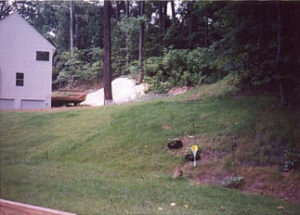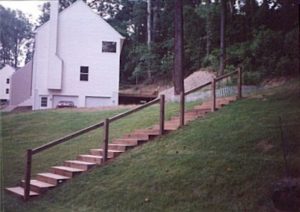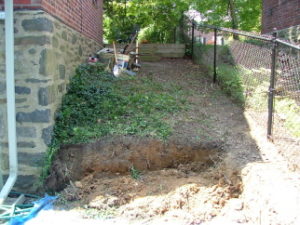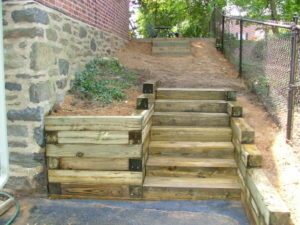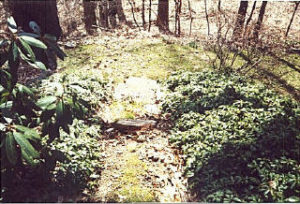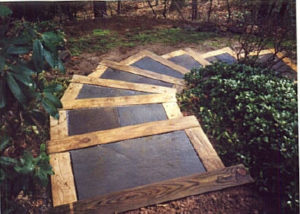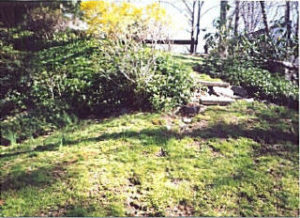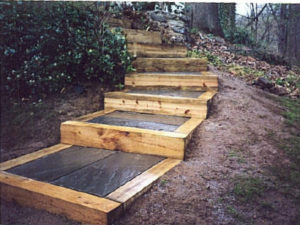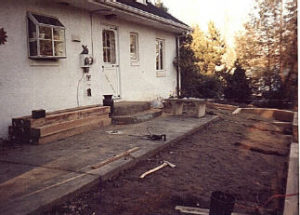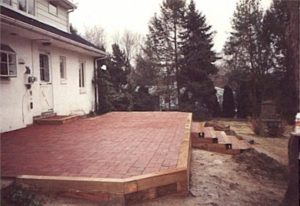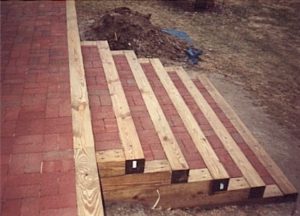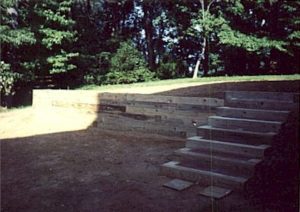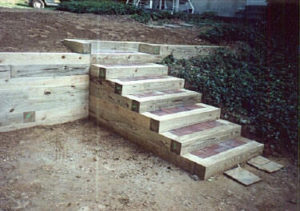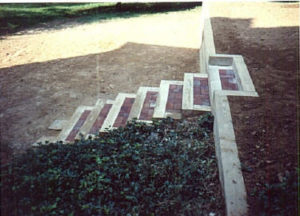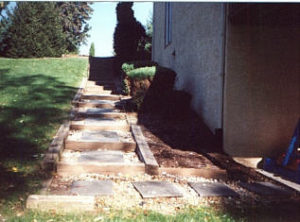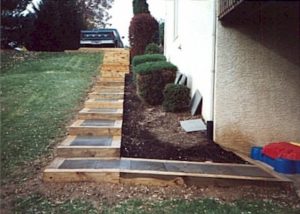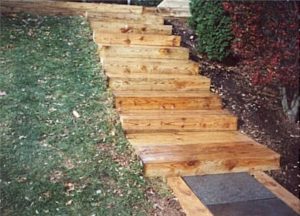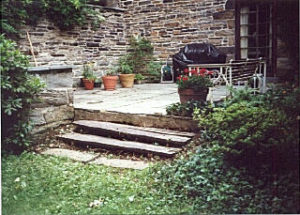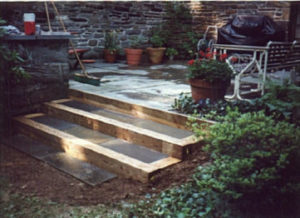We can construct steps and landings with many different materials. The height and length of the hill is measured to determine the number of steps, the height of each riser, and the length of each tread. Pressure treated softwood ties can also be used to make nice economical steps, usually with six inch risers. Ties can also be combined with brick or flagstone as the tread. Ties are anchored to the ground with 2-foot reinforcing rods and are nailed together with 60-penny galvanized nails. Ties from lower steps extend under upper step but no additional foundation is needed so these steps are the most economical. Please view some examples of our tie steps below. All steps shown were constructed by Robert J. Kleinberg Landscape Design and Construction.
Tie Steps – Media, Delaware County, PA 19063
6-in. by 8-in. pressure treated softwood ties are cut in half and hammered together here to make 15-in. treads and 6-in. risers.
- Before:
- After:
Tie Steps and wall- Yeadon, Delaware County, PA 19050
6-in. by 6-in. pressure treated softwood ties are cut and hammered together here to make 11-in. treads and 6-in. risers.
- Before:
- After: Tie Wall and steps
Tie and Flagstone Steps – Newtown Square, Delaware County, PA 19073
- Before From Top:
- After From Top:
- Before from Bottom:
- After from Bottom:
Tie and Brick Steps – Media, Delaware County, PA 19063
- Before:
- After:
Tie and Brick Steps 2 – Newtown Square, Delaware County, PA 19073
- Before:
- After:
- Close-up from below
- Close-up from above
Tie and Flagstone Steps 2 – Marple, Delaware County, PA 19008
- Before:
- After:
Tie and Flagstone Steps 3 – Bryn Mawr, Montgomery County, PA 19010
These steps replaced rotting wood steps and flagstone is used to blend into existing flagstone patio.
- Before:
- After:

